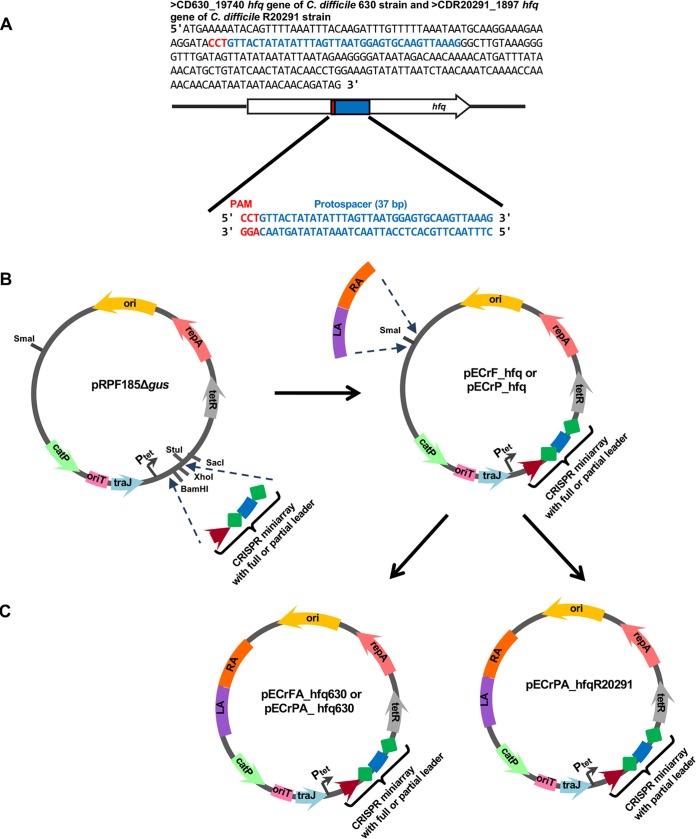FIG 2.
Strategy for the design of the editing plasmids to delete the hfq gene in the C. difficile 630Δerm and R20291 strains. (A) The coding sequences of the C. difficile 630 and R20291 hfq genes and a 37-bp sequence associated with the 5′ CCT PAM, selected as a protospacer for the miniarray. (B) Construction of the pECrF_hfq and pECrP_hfq miniarray plasmids on the basis of the pRPF185Δgus vector. The miniarray sequences were cloned into the BamHI and XhoI restriction sites. (C) Construction of the pECrFA_hfq630, pECrPA_hfq630, and pECrPA_hfqR20291 editing plasmids on the basis of pECrF_hfq and pECrP_hfq. The homologous arms (LA and RA) were cloned into the SmaI restriction site. The F in the plasmid names represents the full-length leader region for autonomous expression of the miniarray under the control of native promoters, while the P points out the presence of a partial leader region without native promoters for miniarray expression under the control of an inducible Ptet promoter. The presence of homologous arms for recombination within the 630Δerm or R20291 strain is indicated by A and the strain name. The pECrFA_hfq630 plasmid carrying the miniarray with the full-length leader region was not efficient for gene deletion in the 630Δerm strain; in contrast, pECrPA_hfq630 and pECrPA_hfqR20291 were efficiently used for hfq gene deletion in the 630Δerm and R20291 strains, respectively.

